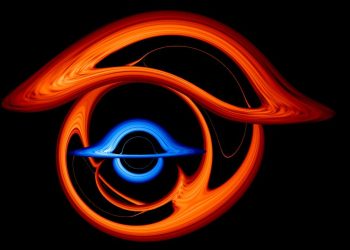This article was originally published on The conversation. The publication contributed the article to Space.com Expert voices: opinion pieces and perspectives.
24 hours a day, 7 days a week since November 2000, NASA and its international partners supported a continued human presence in low Earth orbitincluding at least one American – a streak that will soon reach 25 years.
Seen in the history of spaceflight, the International Space Station is perhaps one of humanity’s most astonishing achievements, a shining example of cooperation in space between the United States, Europe, Canada, Japan and Russia. But all good things must come to an end.
In 2030, the International Space Station will be desorbed: led to a remote region of the Pacific Ocean.
I am a aerospace engineer who helped build a range of hardware and experiments for the ISS. As a member of the spaceflight community for over 30 years and a member of the NASA community for 17 years, it will be difficult for me to see the ISS end.
Since the launch of the first elements of the International Space Station in 1998, the station has been home to significant research achievements in areas including materials science, biotechnology, astronomy and astrophysics, earth sciences, combustion and much more.
Astronauts conducting research inside the space station and experiments with payloads attached outside the station have resulted in numerous publications in peer-reviewed scientific journals. Some of them have advances our understanding of thunderstormsled to improvements crystallization processes of the main drugs against cancer, detailed how to grow artificial retinas in space, explored the ultra pure optical fiber processing and explained how to sequence DNA in orbit.
In total, more than 4,000 experiments were carried out on board the ISS, resulting in over 4,400 research publications dedicated to advancing and improving life on Earth and helping to chart the course for future space exploration activities.
The ISS has demonstrated the value of conducting research in the unique environment of spaceflight – characterized by very low gravity, vacuum, extreme temperature cycles and radiation – to advance scientists’ understanding of a wide range of important physical, chemical and biological processes.
Maintain a presence in orbit
But after the station’s withdrawal, NASA and its international partners are not abandoning their outpost in low earth orbit. Instead, they are looking for alternatives to continue to take advantage of the promise of low Earth orbit as a unique research laboratory and to extend the 25-year-old continuous human presence to about 250 miles (402 kilometers) above the Earth’s surface.
In December 2021, NASA announced three awards to help develop private and commercially operated space stations in low Earth orbit.
For years, NASA has successfully sent supplies to the International Space Station call on business partnersand the agency recently entered into similar commercial agreements with SpaceX and Boeing for onboard crew transportation. the dragon And Starliner spaceshiprespectively.
Building on the success of these programs, NASA has invested more than $400 million to stimulate development of commercial space stations and hopefully launch and activate them before the ISS is decommissioned.
The dawn of commercial space stations
In September 2025, NASA released a draft announcement for phase 2 partnership proposals for commercial space stations. Selected companies will receive funding to support critical design reviews and demonstrate stations with four people in orbit for at least 30 days.
NASA will then proceed with formal acceptance and certification of the design to ensure these stations meet NASA’s strict safety requirements. The result will allow NASA to purchase missions and other services aboard these stations on a commercial basis – similar to how NASA delivers cargo and crew to the ISS today.
It remains to be seen which of these teams will succeed and in what time frame.
During the construction of these stations, Chinese astronauts will continue to live and work aboard their Tiangong Space Stationa three-person facility with a permanent crew in orbit approximately 250 miles (402 km) above the Earth’s surface. Therefore, if the ISS occupation period ends, China and Tiangong will become the longest continuously manned space station in operation: it has been occupied for about four years and counting.

Look on it
In the meantime, enjoy the view
It will be several years before one of these new commercial space stations go around the Earth has approximately 17,500 miles per hour (28,000 kilometers per hour) and several years before the ISS is deorbited in 2030.
So while you have the chance, take a look and enjoy the view. Most nights when the ISS flies overhead, it’s simply stunning: a brilliant blue-white point of light, usually the brightest object in the sky, silently arcing gracefully across the sky.
Our ancestors could hardly have imagined that one day one of the brightest objects in the night sky would have been designed by the human mind and built by human hands.









